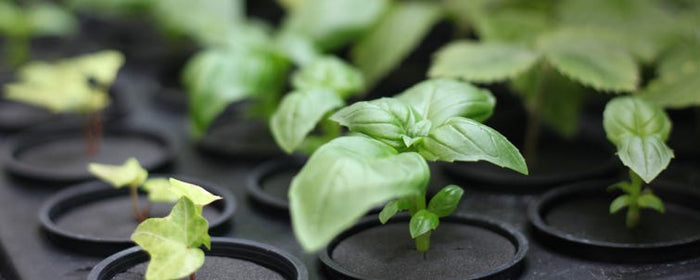
Attack of the Aphids
Ever had a run in with aphids? They're nasty little things that nearly decimated one of our chilli plants. Here's how we handled it.
What Happened
If there's one thing we love, it's chillies.
Naturally, we couldn't resist splashing out on these beauties at the latest Fiery Foods Chilli Festival...a pair of Dorset Naga plants.
We took our eyes off them for about a week, and the aphids attacked!

Diagnosis
After spotting the sneaky little critters, we had to identify them and come up with a battle plan!
How long had they been there?
We last checked the plants 6 - 7 days ago, so the bugs could have moved in just after then.
What were they?
The bugs were clearly aphids, and they were surrounded by their white cast skins.
Aphids are sap sucking insects with over 4000 species – the most common being greenfly and blackfly.
Entomologists reckon they've been about for around 280 million years, and each one is able to produce 600 billion descendants in a single season.
Aphids tend to munch on new foliage and flowers first. They suck up the sugary liquid from plants' vascular system, using a straw like proboscis.
The first sign of aphids is leaf and stem deformities. They also release a sticky honeydew substance onto lower leaves.
One look at our chilli plant confirmed our diagnosis.

Where did they come from?
The life cycle of aphids usually begins early in the season, when the hibernating female lays eggs.
After that they are asexual, and give birth to live wingless young.
Since it was quite late in the outdoor season, we could rule out the possibility of the eggs hatching while we were away. Chances are, they hitched a ride on someone's clothes who maybe brushed against an infested plant.
Treatment
Natural predators include the ladybird, which can decimate a colony of aphids almost as quickly as the aphids can decimate a plant.
In an ideal world, we would have bought some, but time wasn't on our side. We needed to take immediate action.
Step 1
There was only one thing for it - we had to get cutting.
Painful as it was, we hacked off the most infected parts of the plants. We even had to sacrifice some newer flowering sites to protect the older ones.
We lost more of the plants than we wanted to, but needs must.

Step 2
Next, we sprayed what was left of the plants with an insecticide.
We put our faith in Pyrethrum 5EC – it's natural and safe for use on edible plants up to a day before harvest.
We applied it at 4ml/L, completely covering infected parts of the plant and the underside of leaves.

Follow Up
The hard work was done. But to make sure the aphids were well and truly no more, a few more steps were taken.
2 Days Later
We couldn't find a single living aphid, but had to brush off countless dead ones! Impressive! To make absolutely sure that all bugs had been caught, we reapplied the spray once again.
2 Weeks Later
Though the damage was still visible, not a single bug showed up on our scan - Pyrethrum saved us there.
A little trimming and the plants would soon be back in shape.
Fortunately, we saved most of the crop. One plant actually looks set to continue flowering, providing more lovely Dorset Naga chillies!






